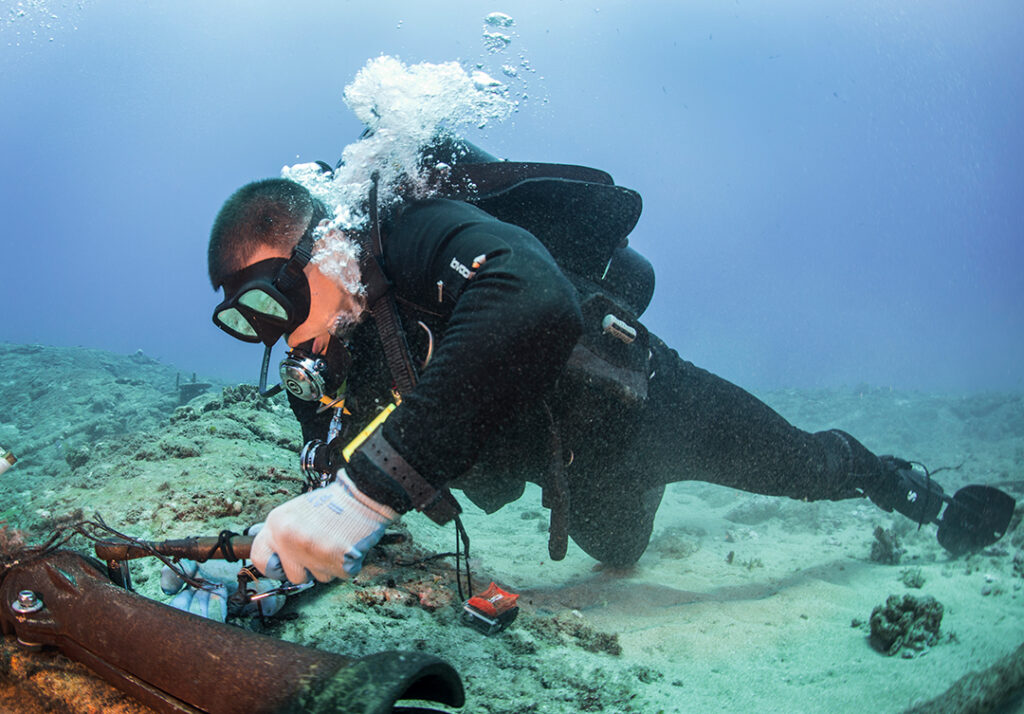THE WATCH STAFF
When an undersea cable connecting Norway to the Svalbard archipelago was disabled recently, global concerns resurfaced about safeguarding vital telecommunications links.
The fiber-optic cable — the northernmost of its kind in the world — is a key element of the Norwegian Arctic infrastructure and provides broadband telecommunications that include space activities at Svalbard, according to owner Space Norway AS. The disruption, which occurred January 7, 2022, immediately raised suspicions about sabotage amid the backdrop of the Russia-Ukraine crisis. Space Norway AS said the cable is one of two, which ensures redundancy, and permanent repairs would be made in February, the agency said in a January 19 news release.
The news release gave the cause as a “shunt failure,” which is “when the cable insulation becomes damaged and causes a short circuit as the metallic core is exposed to seawater,” according to the industry website Submarine Telecoms Forum.
The incident revealed the vulnerability of what are commonly known as submarine cables.
“Undersea cable infrastructure is ripe for sabotage,” Karen Jones, an analyst with Aerospace Corp.’s Center for Space Policy and Strategy, told the website Breaking Defense in a story February 3, 2022.
The head of the United Kingdom’s Armed Forces, Adm. Tony Radakin, told The Times newspaper of London in a January 7 story that Russian activity could “put at risk and potentially exploit the world’s real information system, which is undersea cables that go all around the world.”
The People’s Republic of China also poses a threat to global telecommunications through its state-owned companies that have “greatly increased their investment in submarine cables,” according to a September 23, 2021, report by the Jamestown Foundation. The report stated that in 2021 alone, “three state-owned Chinese telecoms had ownership stakes in 31 newly deployed cables.”
The Telegraph newspaper described the deployed cables that make up the undersea network in a January 22 story:
“Some 436 cables, the size of a garden hose, each containing up to 200 glass filaments as thin as a human hair, wrapped in steel armor, insulation and a plastic coat, are in service around the world, spinning a fiber-optic web more than 800,000 miles long, down which data is poured at the speed of light.”
Those cables keep the world connected.
“Well over 99% of international telecommunications happens through fiber-optic cables, not satellites,” industry analyst Tim Stronge told The Telegraph.
Most lines are owned by private telecommunications companies, including giants like Google and Microsoft, according to The Associated Press (AP). The U.S. Federal Reserve estimates that more than U.S. $10 trillion are transmitted via undersea cables every day, according to The Telegraph. The world’s militaries rely on them. (Pictured: A U.S. Navy diver works on a submerged cable at the Pacific Missile Range Facility Barking Sands, Hawaii, in 2016.)
A recent study from Aerospace Corp.’s Center for Space Policy and Strategy co-authored by Jones finds that new, high-capacity broadband satellites could provide backup for undersea cables. These include the emerging megaconstallations in low earth orbit such as SpaceX’s Starlink and Amazon’s Project Kuiper, the study said, according to Breaking Defense.
The cables are easily identified on public maps, according to AP, with “swirling lines that look like spaghetti.” Undersea, their remote locations make them difficult to monitor and safeguard. Then there are the landing stations where the cables come ashore, which the U.K.’s Centre for the Protection of National Infrastructure described as “poor in terms of physical security … an obvious risk,” according to The Telegraph.
Current international governance is insufficient to safeguard submarine cables, according to a paper in the May 5, 2021, volume of Princeton University’s “Journal of Public and International Affairs.”
“These are definitely critical infrastructure, both for finance and military activity,” Bert Chapman, professor at Purdue University and author of the report “Undersea Cables: The Ultimate Geopolitical Chokepoint.”
“Any attack on them could have a potentially decapitating effect.”
IMAGE CREDIT: U.S. NAVY

